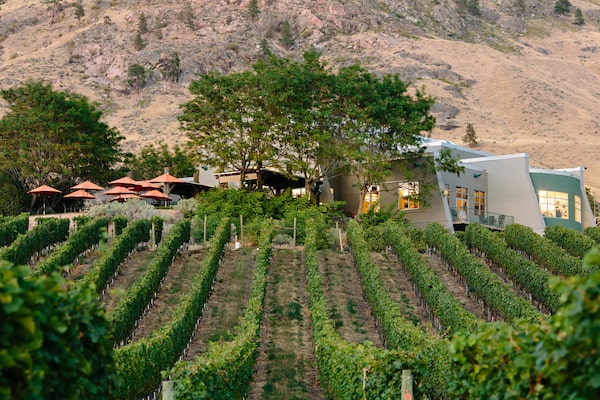
The six new sub-appellations in the Okanagan Valley are East Kelowna Slopes, South Kelowna Slopes, Summerland Bench, Summerland Valleys, Summerland Lakefront and Lake Country.Courtesy of Arterra Wines Canada
For more wine advice and reviews, recipes, restaurant news and more, sign up to receive our Good Taste newsletter in your inbox every Wednesday.
Winemakers in British Columbia’s Okanagan Valley can declare six new sub-appellations to help consumers better understand where grapes are grown. Locations in Kelowna, Lake Country and Summerland have been singled out as sub-geographical indications, which are smaller, more distinctive regions inside the existing framework of the Okanagan Valley appellation.
These sub-appellations followed in-depth studies of the areas’ soils, climate conditions, landforms, bodies of water and geographical boundaries, with results forming a detailed technical report submitted to the British Columbia Wine Authority for approval. This regulatory process takes years and requires collaboration among regional producers to formulate a proposal that proves defined boundaries and distinct conditions.
“When a bottle of BC VQA wine is purchased, the consumer knows they are guaranteed assurance of quality and that it is 100-per-cent B.C. The introduction of sub-regions of notable sense of place is the natural next step in the evolution of our wine industry,” says Miles Prodan, president and chief executive officer of Wine Growers British Columbia.
The six new locations are East Kelowna Slopes, South Kelowna Slopes, Summerland Bench, Summerland Valleys, Summerland Lakefront and Lake Country. They are legally protected terms that define the geographical origin of winemaking. Wines made in previous vintages that meet the established criteria can use the new appellations of origin. Bottles from O’Rourke Family Vineyards and Peak Cellars have been released with Lake Country on their labels, with others soon to follow.
Wines labelled with geographical indications and/or sub-geographical indications commit to consumers that the wine was produced with a minimum 95 per cent of grapes grown in the specified region.
Golden Mile Bench on the western slope of Okanagan Lake was the Okanagan’s first sub-appellation, established in 2015. Okanagan Falls was ratified in August, 2018, followed by Naramata Bench and Skaha Bench in May, 2019, and Golden Mile Slopes in January, 2022.
British Columbia now features 21 geographical indications, including nine broad GIs, such as Fraser Valley, Lillooet, Similkameen Valley, Thompson Valley and Vancouver Island, and 12 more narrowly defined sub-GIs, including 11 located in the Okanagan and Cowichan Valley on Vancouver Island. An application for the Black Sage Bench in the Okanagan was submitted in June.
E-mail your wine and spirits questions to The Globe. Look for answers to select questions to appear in the Good Taste newsletter and on The Globe and Mail website.
 Christopher Waters
Christopher Waters